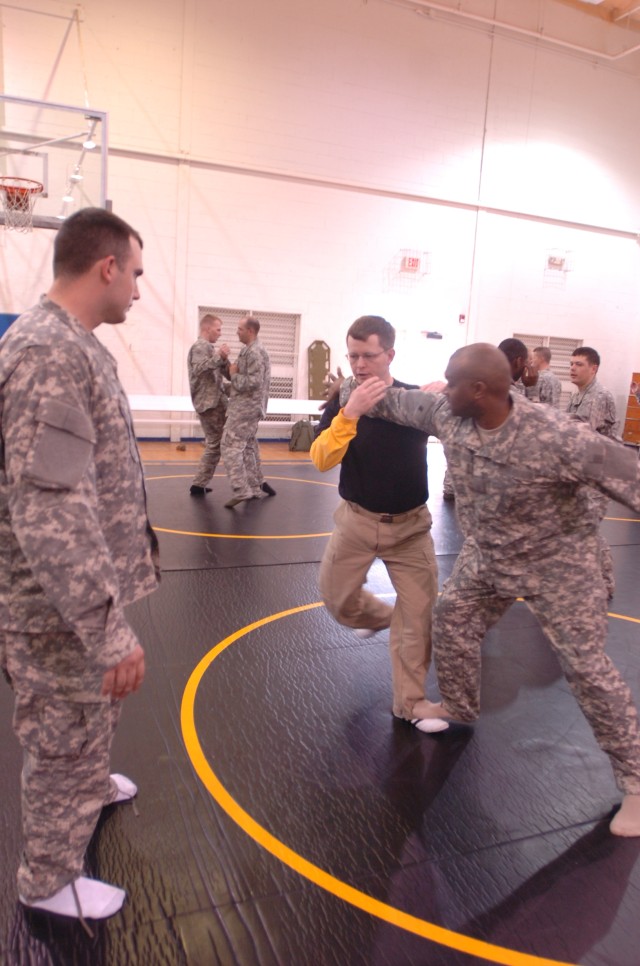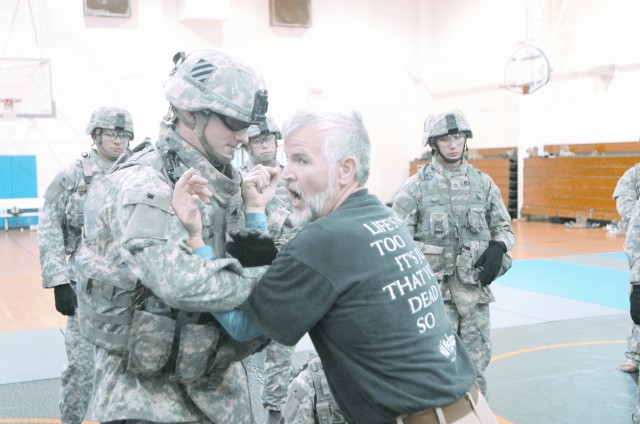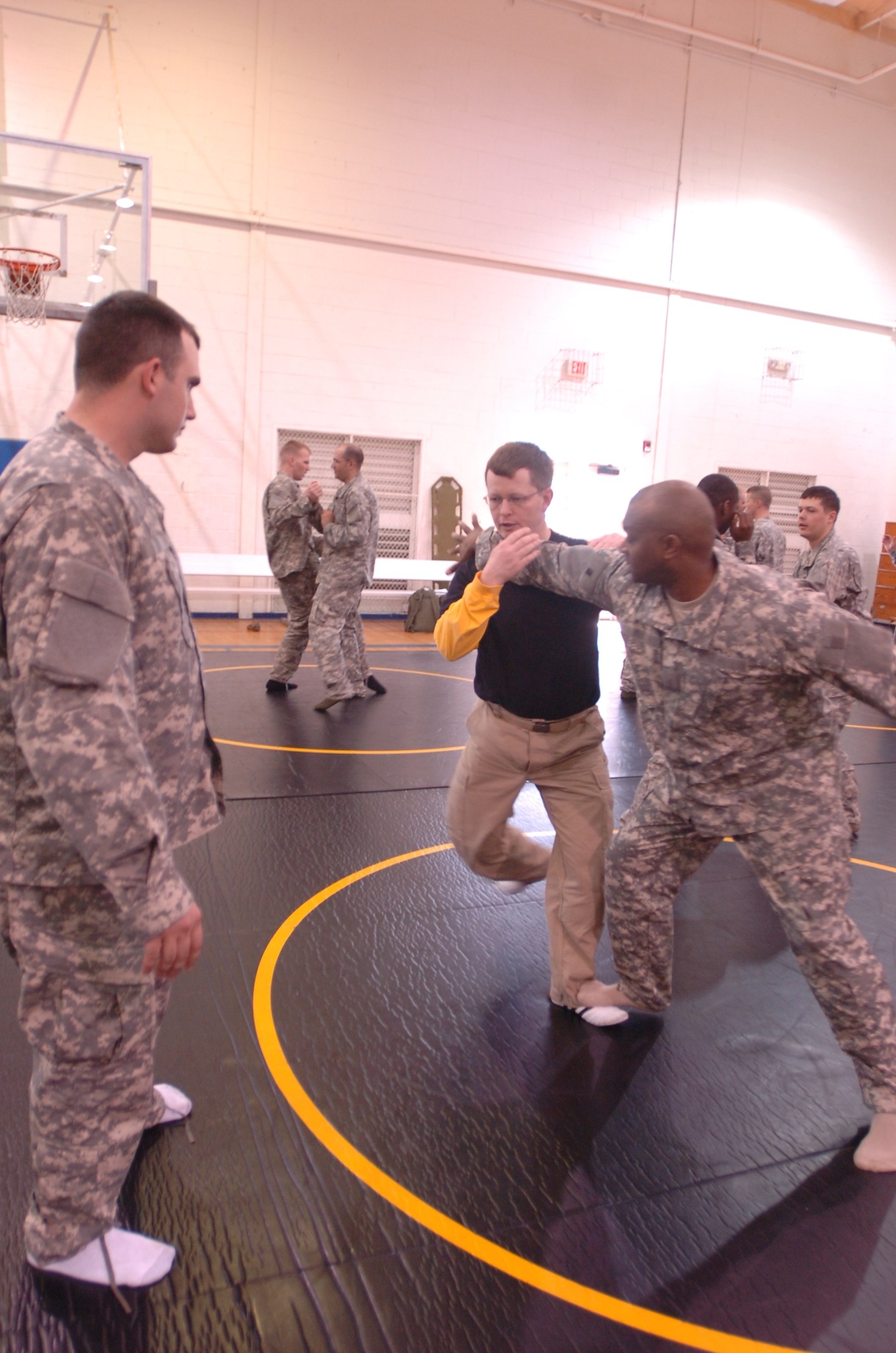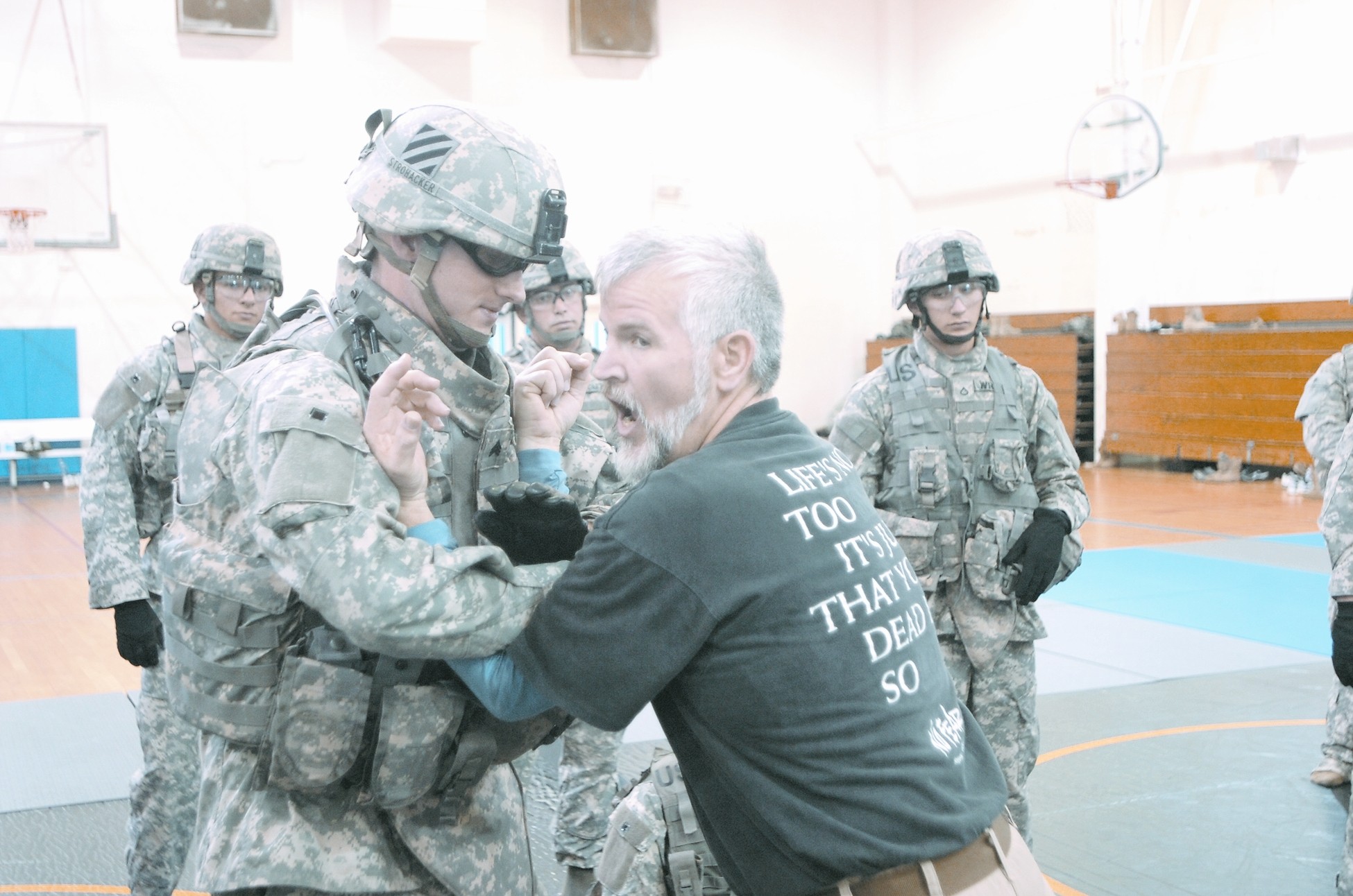FORT STEWART, Ga. </B> A Soldier and a plain-clothed civilian man stand, facing each other with their hands up, knees slightly bent, and each watching the other\'s every move. The Soldier strikes out, lunging toward his opponent's throat to secure a choke hold, but the Soldier is quickly side-stepped by his opponent and finds himself in a tight hold. The man releases the Soldier, then turns to an audience of on-looking Soldiers and explains how he was able to successfully stop and reverse the opposing Soldier's attack.
Master William Guy, master in several forms of martial arts including Hapkido and Taekwondo, came to Fort Stewart, Feb. 23 - 25 to teach and train the 3rd Squadron, 7th Cavalry Regiment, 2nd Brigade Combat Team, 3rd Infantry Division Soldiers a more "in-depth" aspect of combatives at Caro Gym.
Guy's training partner, Brad Fowler, also a professional combatives instructor, assisted him with training and teaching the Soldiers as well. During combatives training, Soldiers usually battle at ground level, sometimes wrestling on the knees but rarely ever going to the standing position to fight.
Guy, however, instructed the Soldiers from the standing position, showing Soldiers the importance of not just being able to defend yourself while tussling on the ground but of understanding how balance and the body's movements could be key factors during a battle.
The master instructor said that one thing his experience in martial arts taught him was that understanding the human anatomy could really play an important role in defending one's self.
Guy has been practicing martial arts since 1974, and he said that he and his wife have owned a martial arts school since 1983. "
I'm teaching the Soldiers how to use their body as well as their mind," Guy said. "Once they understand how and why the body itself moves the way it does in contact, then it will be easier for them to predict and prevent their opponents attack." Fowler added that though military combatives has no set martial arts style, the arts still appear from time to time.
"You see Hapkido and even some Taekwondo during Army combatives," said Fowler. "They show their faces every once in a while, so instead of trying to teach the Soldiers one specific type of martial arts, we train and instruct them in understanding the body, just like in martial arts teachings."
Guy said that 3/7 Cav. Commander, Lt. Col. William C. Lindner was one of his students years ago.
"The colonel learned some of the same strategies I'm teaching the Soldiers today back in Omaha when I trained him," Guy said. Lindner, who was in attendance for a great deal of the training, helped to instruct the Soldiers.
"Master Guy and I met by accident when I was stationed in Omaha," Linder said. "I studied with him for about two and a half years. He's been to several military installations to teach his techniques but this is his first time at Fort Stewart."
Lindner said that while some instructors in martial arts are just in it for the money, Guy is serious about his teachings as well as passing on his knowledge to servicemembers.
"Guy is a retired (chief warrant officer 3)," Lidner said. "He has a son-in-law in the Army, and his daughter also serves in the Reserves, so training Soldiers is something he's really about."
The lieutenant colonel said the Army's combatives program is undoubtedly great, but that it focuses mostly on ground fighting.
"I think that being able to avoid getting tangled with your opponent or falling to the ground while wearing 65 pounds of gear is better than being able to wrestle your opponent,"
Lindner said. "These instructors are training my whole squadron in three days to understand their oppositions' movements and body mechanics; this is something they can use anywhere, anytime." Lindner said that it felt good watching his old instructor pass some of the same training that he once received down to his Soldiers.
"It's been a great experience," he said. "To me, this is just a great example of the Warrior Ethos, and it is personally rewarding to see my instructor, after all these years, training my Soldiers, just as he did me."
Captain Andrew Brown, Headquarters and Headquarters Troop, 3/7 Cav., said the Soldiers definitely enjoyed the instructors' new spin on combatives. "We've been doing combatives for a couple of weeks now, in the mornings so the Soldiers thought this (training) was going to be similar to that," said Brown. " When they saw that we would be standing while we fight, they were excited." Brown said the instructors were very informative and the Soldiers truly enjoyed the training.
"Just listening to him talk about how important footwork is in a fight let me know that the instructor was really taking it back to the basics," Brown said. "He also touched on how important understanding balance is." "The whole experience has really been incredible, and I know the Soldiers definitely got a lot out of it," he added.




Social Sharing